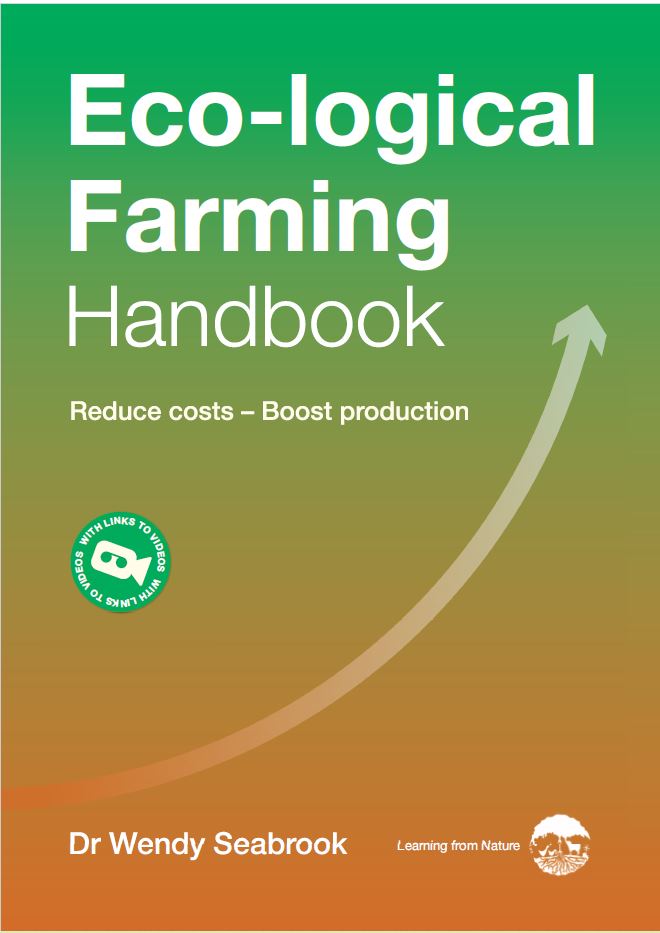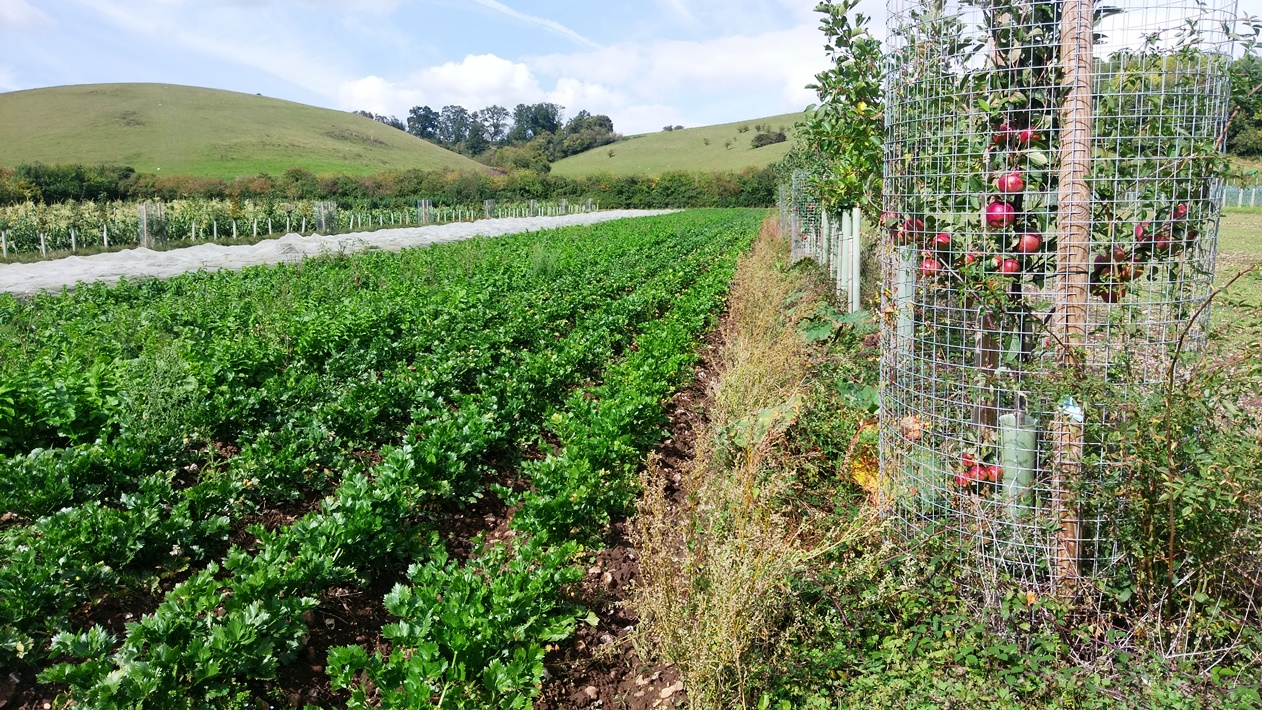Growing trees is terrific. But how can we grow vegetables with trees? Alley cropping vegetables by growing them between rows of trees, shrubs, and perennial grasses improves the microclimate, reduces the impacts of extreme weather, and increases overall production by growing tree crops, timber and firewood. These are important, but the primary benefit is from the additional vegetation grown.

Alley cropping maize between young Gliricidia trees
Growing a single layer of vegetation is tough on the soil, especially in warmer and wetter climates. The amount of plant biomass (roots and shoots) and root exudates (the sugars and proteins plants secrete from their roots) supplied to the soil organisms is usually insufficient. That’s why we have to rely on fertilisers to replace the natural recycling and resupply of nutrients to our crops and bring in compost, mulch and other organic materials to prevent loss of organic matter.
By growing vegetables between alleys of plants, we help supply extra food resources. Better resourced, the microbes and other organisms in our soil can maintain our soil ecosystem.
Provided with an adequate, diverse and preferably year-round food supply, soil organisms:
- Break down and decompose leaves, sticks, animal carcasses, and other organic waste materials into organic matter (particles containing varying amounts of carbon, oxygen, hydrogen, nitrogen and other nutrients);
- Convert the nutrients in the organic matter into simple forms that plants can absorb;
- Produce acids and enzymes that release nutrients locked up in the sand, silt and clay particles in the soil
- Supply these nutrients to plants for reuse, and
- Maintain a soil infrastructure with organic matter, aggregates and spaces in between, facilitating root growth, water and nutrient storage, and biodiverse and abundant soil life.
Healthy soil is essentially soil with a functioning soil ecosystem.
So next time you’re getting out the fertiliser bags or start spreading compost, ask yourself, is what I am doing eco-logical!
Alley cropping is just one of the tools available to improve food supplies for our soil organisms, and therefore have less need for these inputs.
Here’s Adam Collins showing how he uses alley cropping with his commercial potato and garlic crops.
Getting Practical
- Use species that will grow well in your climate, soil and other growing conditions.
- Design your alleys to suit your latitude, climate, and other growing conditions by designing the width of your alleys, the space in between the alleys, and the height and density of your tree canopy to suit your conditions.
- Growing in temperate areas and other higher latitudes, use wider spacings and north-south orientation to maximise sunlight or use other orientations depending on your priorities, eg. at right angles to the wind or across your slope.
Or better still, get everything you need to know about using this eco-logical approach with this practical Handbook from Learning from Nature – Featured Image – © AgForward and other images © World Agroforestry Centre, ICRAF
Featured Image – © AgForward and other images © World Agroforestry Centre, ICRAF
